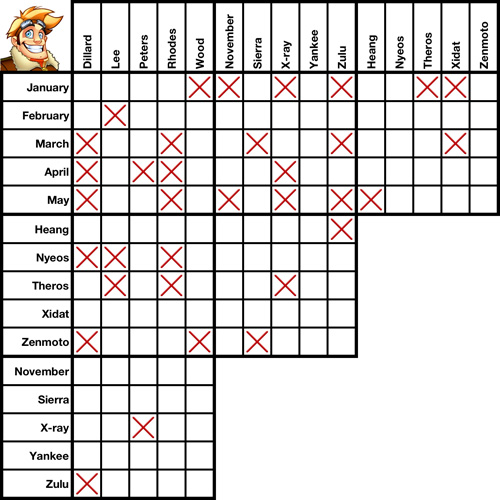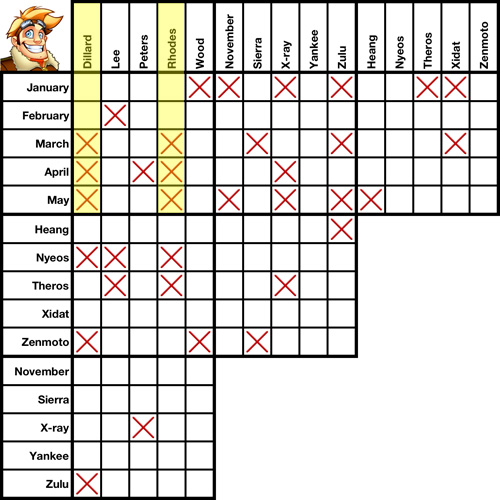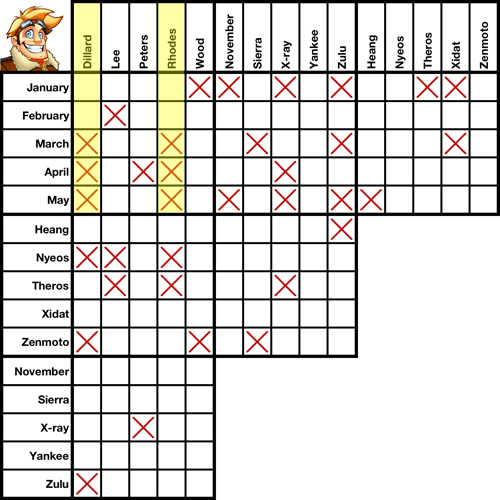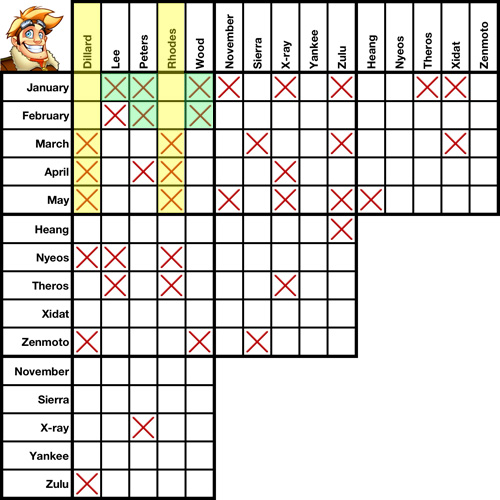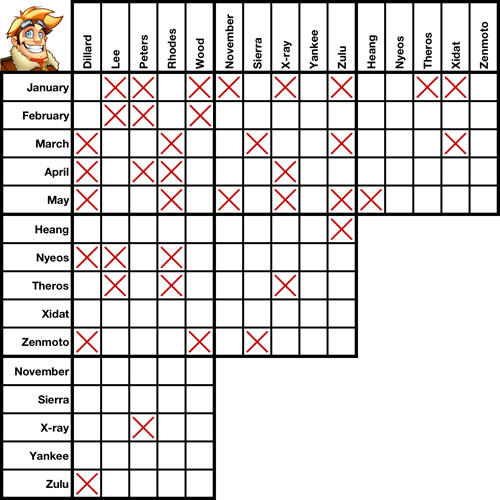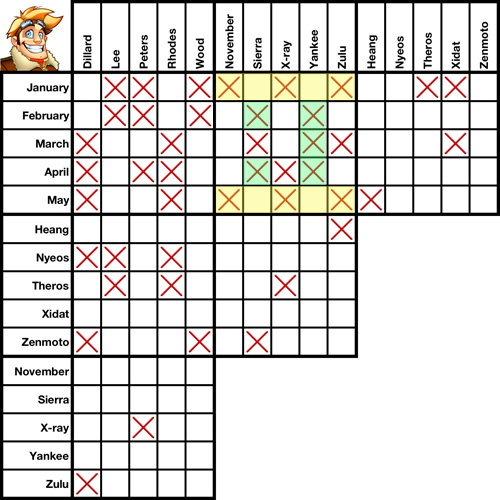We call this arrangement a "pseudo-true pair" because when it comes to Dillard and Rhodes and January and February, we have two vague true relationships "hidden" in the grid.
We know that Dillard can only be one of two months - January or February. If Dillard is January, then Rhodes is February - and if Dillard is February, then Rhodes is January. No other options are available, therefore Dillard/Rhodes and January/February are locked in a "pseudo-true" relationship. We don't know which is which yet, but we can use this relationship to uncover four new false squares.
« Prev slide »Next slide »

